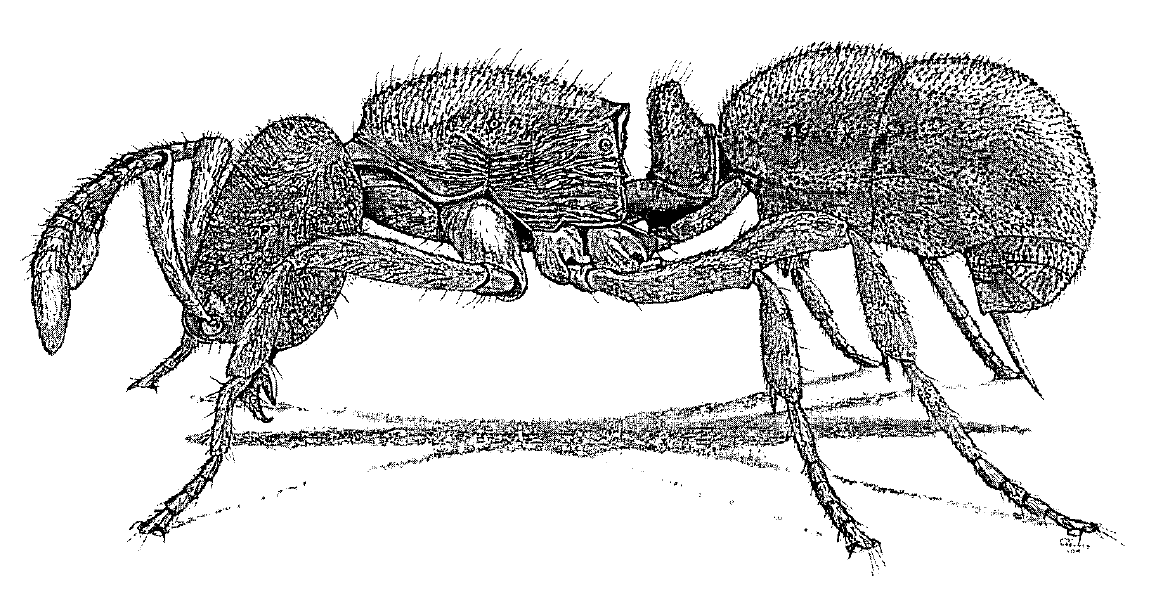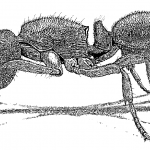 Drawing by Holly K. Coovert
Drawing by Holly K. Coovert Orangish to reddish-brown, legs somewhat paler, head and alitrunk distinctly sculptured but surface largely glossy; body finely pubescent. The smaller size and petiole shape are diagnostic for this species.
Some early Ohio literature uses the synonymous P. crassicorne.
Colonies are small; ones found by Wesson & Wesson ( 1940) had 30 to 40 workers, a dealate female, and several winged males and females, plus brood. Holldobler & Wilson ( 1990) report colony size of 9-60.
Widespread in Ohio. Recorded from 5 counties.
This is the more common species of Proceratium. The cryptic reddish-brown coloration of these slow moving ants makes them hard to see.
Size
2.4mm - 2.8mm
Habitat
Found in open woods (Wesson & Wesson, 1940). See also Carter ( 1962) for North Carolina habitats.
Food
A specialized predator of eggs of spiders and other arthropods (Brown, 1958), which are stored in the nest for later consumption (Brown, 1979).
Behavior
Strictly found underground or beneath cover (hypogaeic). The reflexed tip of the gaster is "used to tuck the slippery eggs toward the mandibles when the eggs are being carried" (Brown, 1979).
Nesting Information
In moist, well-rotted stumps or logs; in rather dry soil under stones or moss
Verified Locales (counties)
Butler, Franklin, Geauga, Greene, Pike,


